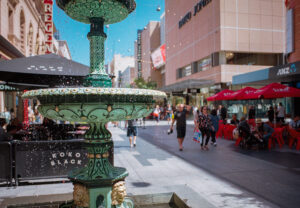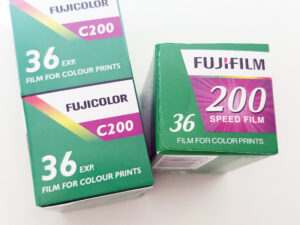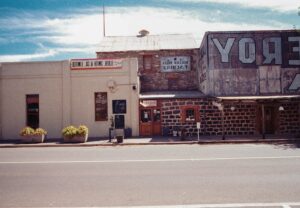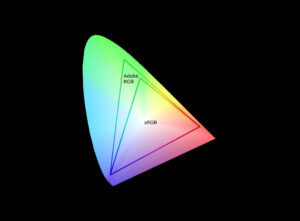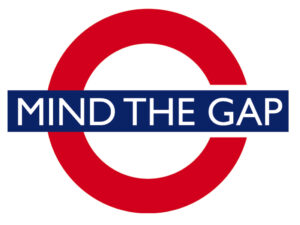I’ll be honest—JB Hi-Fi is my happy place.
It’s loud. It’s bright. It’s packed wall-to-wall with tech, games, gadgets, and appliances I didn’t even know I needed until I got there. And somehow, despite the visual chaos, it works. I often find myself wandering the aisles just to chill, even when I’m not buying anything. There’s something electric about it—and that’s not just the hum of all the powered-up demo units.
But what’s wild is this: beneath the hand-drawn-style price tags and bargain-bin vibes is one of the most sophisticated, strategic, and profitable retail operations in Australia. JB Hi-Fi has turned what looks like clutter into a customer magnet, and what feels casual into retail domination.
This is the story of how they did it—and why it works so damn well.
From Hi-Fi Niche to Household Name
JB Hi-Fi started humbly in 1974, in Keilor East, Victoria, selling high-end stereo gear to serious audiophiles. That’s where the name comes from—John Barbuto, the founder. It wasn’t flashy. It wasn’t mass-market. But it was passionate. And from those roots, the company would grow into a retail giant with over 320 stores and $10 billion+ in annual revenue.
John Barbuto (JB), trading from a single store in East Keilor, Victoria. He had one simple philosophy: to deliver a specialist range of Hi-Fi and recorded music at Australia’s lowest prices.
After going public in 2003, JB hit the gas pedal. They opened new stores like crazy, moved into all things tech, and eventually acquired The Good Guys in 2016, solidifying their dominance in both entertainment and whitegoods.
While other retailers folded or faded, JB got scrappier—and stronger.
The Power of “Anti-Brand” Branding
Walking into a JB store is a full-on sensory experience. Blinding yellow signage. Red text. Handwritten-style price tags. Piles of tech gear stacked high like it’s Black Friday every day. But make no mistake—this is strategic chaos.
This aesthetic is designed to scream value. You feel like if you don’t grab that deal now, it’ll be gone. The handwritten vibe makes it feel less corporate, more street-smart. It’s a genius way to create urgency, energy, and authenticity—all while standing out from the cold, over-designed vibes of competitors.
It feels like a place for people like me. People who love a bargain. People who don’t need velvet carpets and mood lighting to know a good deal when they see it.
Products That Keep You Coming Back
JB doesn’t just sell gear—they sell everything. Phones, laptops, games, TVs, drones, vacuum cleaners, speakers, air fryers, kitchen mixers—if it plugs in or powers up, JB probably has it. And that’s before you even get to vinyl records or Blu-rays.
They’ve gone from niche audiophile supplier to full-blown home tech provider. The Good Guys acquisition let them expand even deeper into household essentials—fridges, washers, dryers—items with better margins and longer replacement cycles.
JB isn’t just where you buy your next iPhone—it’s where you buy your next washing machine, too. That’s powerful.
Price Matters—And JB Gets It
Let’s talk pricing, because this is where JB Hi-Fi crushes it.
Unlike retailers who panicked when Amazon came to Australia, JB just smiled and got to work. They implemented smart, real-time pricing systems that adjust to market trends and competitor movements. If Amazon drops a price, JB can match it—fast.
And they make it simple. No weird loyalty points. No mail-in rebates. Just great prices, clearly marked.
That transparency builds trust. I don’t feel like I’m being played—I feel like I’m scoring a deal. And that’s why I keep going back.
Culture That’s as Real as the Signage
One of JB’s biggest secrets? The people.
The staff at JB know their stuff. They love what they sell. Whether it’s headphones, games, or soundbars, you’ll usually find someone who’s not just helpful—they’re actually excited to talk tech. That’s rare.
Behind the scenes, JB Hi-Fi runs a lean, decentralized business model. Store managers and teams have autonomy. Decisions get made faster. People feel like they own their sections. It’s not robotic—it’s alive.
That energy bleeds into the customer experience. It’s not slick. It’s not polished. But it’s real. And I’ll take that any day over a soulless superstore with elevator music and vacant stares.
Digital That Doesn’t Miss
I’m the kind of person who’ll browse in-store, then buy online—or the other way around. JB nailed both. Their website is slick, fast, and informative. You can see local stock levels, choose Click & Collect, or get stuff delivered at Amazon-level speeds.
When COVID hit, JB didn’t flinch. Online sales exploded, and the business adapted with barely a hiccup. Now, online is more than 15% of their revenue and climbing.
It’s a true omnichannel model—and one of the only ones in Aussie retail that actually works. On a Sunday, I can order from JB and have my purchase delivered to my door by Uber. Its easy and I don’t have to get up from my couch. But I actually prefer to go into the stores. The staff a cool.
Final Thoughts: Why I’ll Always Be a JB Fan
I love JB Hi-Fi. Not just because I can find a great deal or play with the latest gadgets. But because it feels good to shop there.
It’s messy, sure. It’s loud. But it’s also honest, exciting, and fun. And beneath the surface? It’s one of the smartest retail operations in the country.
Next time you’re in a JB Hi-Fi, take a second to appreciate the madness. Because that “chaos” is actually a masterclass in retail strategy—and I, for one, am always happy to be a part of it.
What do you think of JB Hi-Fi’s approach? Have a favourite JB story? Drop it in the comments. And if you liked this post, share it with a fellow bargain hunter.










